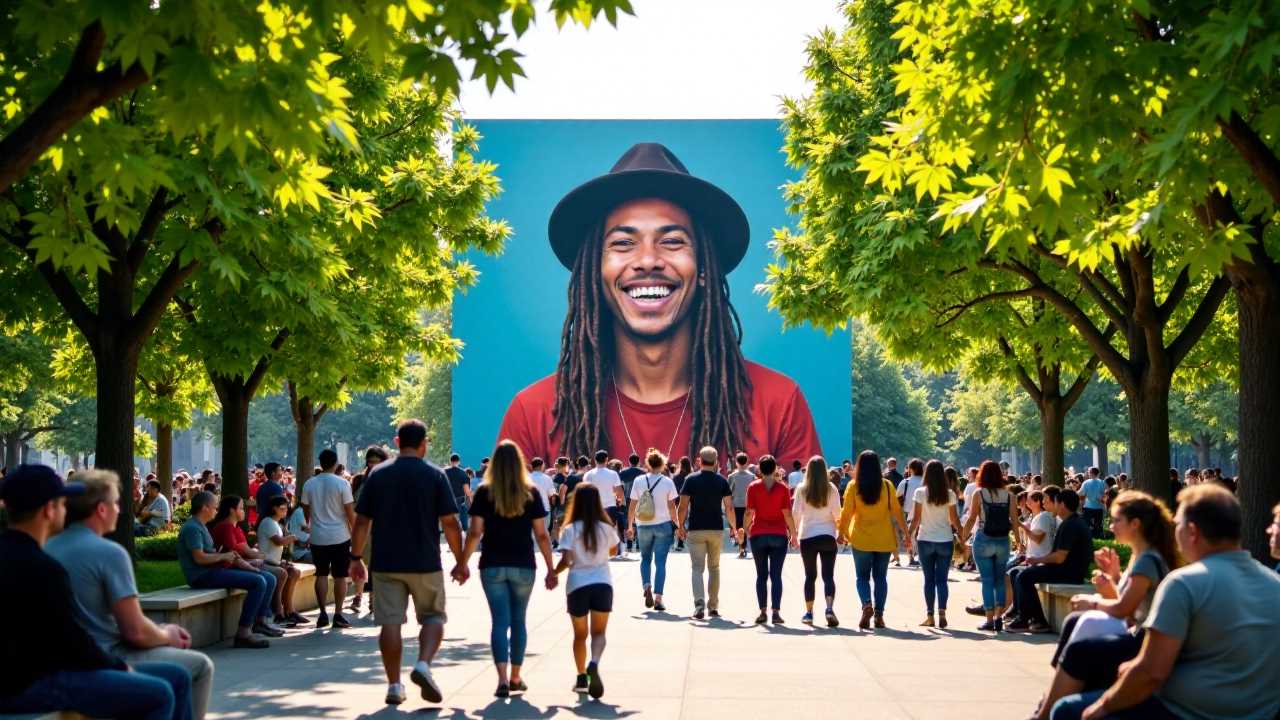Fashion
How Media Shapes Our Views on Body Positivity and Acceptance
Media’s portrayal of beauty standards significantly influences perceptions of body positivity and acceptance. Narrow beauty ideals, often amplified by social

Media shapes your views on body positivity and acceptance largely through the promotion of narrow beauty standards. You often see edited images and unrealistic portrayals that can distort healthy body perceptions. Social media plays a crucial role, mixing messages of self-love with idealized versions of beauty. By curating your feeds to include diverse and authentic content, you can counteract these harmful norms. Also, being critical of advertising helps you discern your worth beyond appearance. Engaging in conversations about body image fosters understanding and acceptance. Investigate these themes further to uncover how they affect your self-perception and body image journey.
Understanding Media Representation
In today’s world, media representation plays an essential role in shaping our perceptions of body image. You encounter various images daily, from social media feeds to advertisements, all promoting specific ideals of beauty. These representations often focus on thinness, muscularity, or other narrow standards, which can distort your understanding of what a healthy body looks like.
It’s vital to recognize that these images don’t reflect reality; they often rely on filters and edits that create an unattainable standard.
When you consume media, pay attention to the diversity of bodies represented. Are there individuals who look like you? Are there people of different sizes, shapes, and backgrounds? Seeking out content that celebrates body variety can help you build a more inclusive view of beauty.
Follow accounts that promote body positivity and acceptance; they offer perspectives that challenge conventional norms.
Additionally, consider the impact of your own social media. Curate your feed to include positive influences, and remember to question the images you see. Engaging critically with media can empower you to accept your body and encourage others to do the same.
Historical Context of Body Imagery
Throughout history, body imagery has evolved significantly, influenced by cultural, social, and economic factors. You might notice how different eras and societies have their own ideals of beauty, shaping how people view themselves and others. In ancient cultures, larger body types often symbolized wealth and fertility, while more recent times have leaned towards thinner body ideals, driven by fashion and media trends.
Understanding this historical context can help you reflect on the pressures and standards you encounter today. Here are some key points to contemplate:
- Cultural Standards: Different cultures have valued various body types, impacting individual self-esteem and acceptance.
- Economic Influence: The rise of consumerism has led to specific beauty standards, often tied to marketing and advertising strategies.
- Art and Media Representation: Art movements and media portrayals have shifted perceptions of beauty, from Renaissance paintings to modern advertising campaigns.
Recognizing these influences can empower you to challenge unrealistic standards. By understanding the historical context of body imagery, you can foster a more accepting attitude toward yourself and others, appreciating the diversity of bodies throughout time.
The Role of Social Media
Social media has become a powerful platform for shaping body image and promoting body positivity, often simultaneously amplifying both acceptance and unrealistic standards. You might notice that scrolling through your feeds exposes you to a mix of inspiring body-positive content and edited images that set unattainable expectations. This duality can be confusing, as you’re bombarded with messages about loving yourself while also seeing filtered versions of beauty.
To navigate this landscape, it’s vital to curate your social media experience. Follow accounts that promote diversity and authenticity, showcasing a range of body types and real-life experiences. Engaging with this content can help you foster a healthier self-image and encourage acceptance of your own body.
Additionally, keep in mind that social media often highlights the best moments, not the everyday reality. It’s important to approach what you see with a critical eye. When you recognize that many images are curated or edited, you can gain perspective on your own body and its uniqueness.
Influence of Advertising
Advertising plays a critical role in shaping our perceptions of beauty and body image, often setting unrealistic standards that can negatively impact self-acceptance. You might notice how many ads feature models who’ve been retouched and styled to fit a narrow definition of beauty. This constant exposure can lead you to feel inadequate about your own appearance.
Consider how advertising influences your thoughts:
- Unrealistic portrayals: Many ads showcase idealized bodies that are unattainable for most people.
- Product association: You might find yourself believing that certain products will help you achieve the perfect look, reinforcing the idea that your worth is tied to your appearance.
- Cultural norms: Advertising often reflects and perpetuates cultural standards, making it challenging to accept diverse body types.
It’s essential to approach advertising critically. Remind yourself that these images are often manipulated and not reflective of real life.
Promoting Positive Body Image
A growing number of individuals are recognizing the importance of promoting positive body image in their lives. You might wonder how you can contribute to this movement. Start by surrounding yourself with positivity. Follow social media accounts that celebrate diverse body types and promote self-love. This can reshape how you view yourself and others.
Next, practice self-compassion. Instead of criticizing your appearance, try to focus on what you appreciate about your body. Maybe you love how strong your legs are or how your smile lights up a room. Acknowledging these strengths helps create a healthier mindset.
Additionally, engage in conversations about body image with friends and family. Sharing experiences can foster understanding and support among peers. When you discuss the pressures of societal standards, you create a space for vulnerability and acceptance.
Lastly, keep in mind that body image is often influenced by media portrayals. Challenge unrealistic beauty standards by questioning what you see in advertisements or on television.
Frequently Asked Questions
How Does Body Positivity Differ Across Cultures?
Body positivity varies widely across cultures. You’ll notice that different societies celebrate diverse body types, influenced by traditions, beauty standards, and social beliefs. Engaging with these differences can enrich your understanding of body acceptance worldwide.
What Role Do Celebrities Play in Body Positivity Movements?
Did you know that 67% of people feel more confident after seeing celebrities advocate for body positivity? Celebrities influence you by challenging beauty standards, promoting self-love, and creating a supportive environment for diverse body types.
How Can Parents Educate Children About Body Acceptance?
To educate your children about body acceptance, model healthy self-talk, encourage open discussions about feelings, and celebrate diversity. Help them appreciate their uniqueness while emphasizing that beauty comes in all shapes, sizes, and colors.
Are There Any Books or Resources Promoting Body Positivity?
Have you investigated books that celebrate body positivity? Titles like "The Body Is Not an Apology" and "Shrill" offer powerful insights. Online platforms and local libraries also provide resources that encourage acceptance and self-love.
How Does Body Positivity Impact Mental Health?
Body positivity significantly boosts your mental health by fostering self-acceptance and reducing negative self-talk. You’ll feel empowered, cultivate resilience, and develop a healthier relationship with your body, leading to increased overall well-being and happiness.

Hey there! I’m William Cooper, your go-to guy for all things travel at iMagazineDaily. I’m 39, living the dream in Oshkosh, WI, and I can’t get enough of exploring every corner of this amazing world. I’ve got this awesome gig where I blog about my travel escapades, and let me tell you, it’s never a dull moment! When I’m not busy typing away or editing some cool content, I’m out there in the city, living it up and tasting every crazy delicious thing I can find. Join me on this wild ride of adventures and stories, right here at iMagazineDaily. Trust me, it’s going to be a blast! 🌍✈️🍴







